Navigating between modes
Navigating between multiple modes offers users flexibility and control over their email creation experience. By enabling seamless switching between full screen mode — for a comprehensive view, mini mode —for a streamlined view, and a modeless dialog — for a more integrated workflow, users can tailor the email composer to their specific needs and preferences.
This adaptability enhances productivity and allows users to focus on their email composition. Regardless of mode, the email composer is designed to allow users to easily switch between modes.
Email composer — mini
When drafting an email in the email composer mini, users can select the pop-out button located in the actions toolbar. This will open an email composer in a new tab and the content from the drafted email will display there.
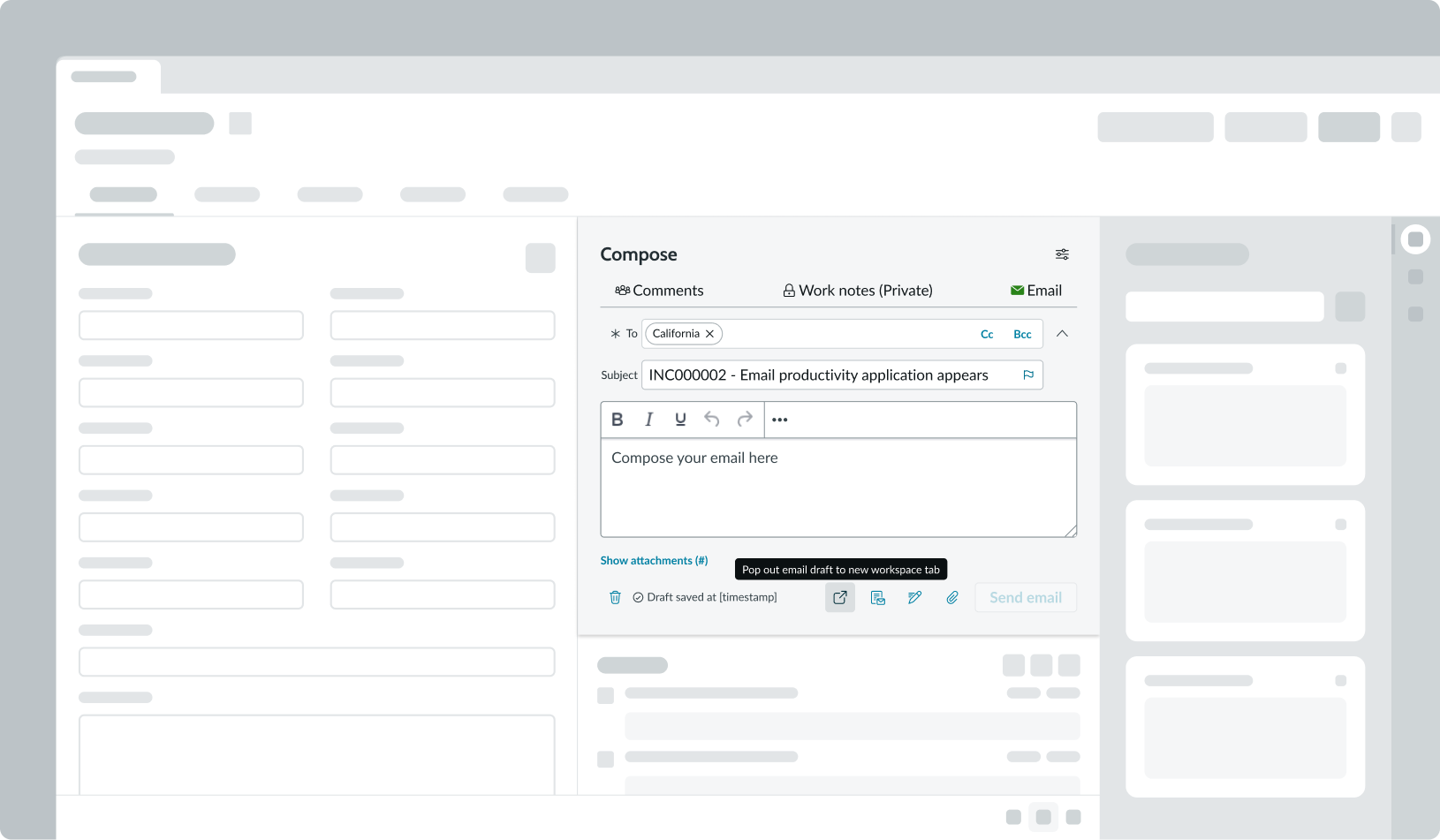
- Pop-out button: Opens full email composer in new tab, carrying over content from the current view
Email composer — full screen
When a user selects the pop-out button in the email composer mini or modeless dialog, they are transported to a new tab that displays the full screen composer. Full-screen mode provides users with a larger viewing and editing area.
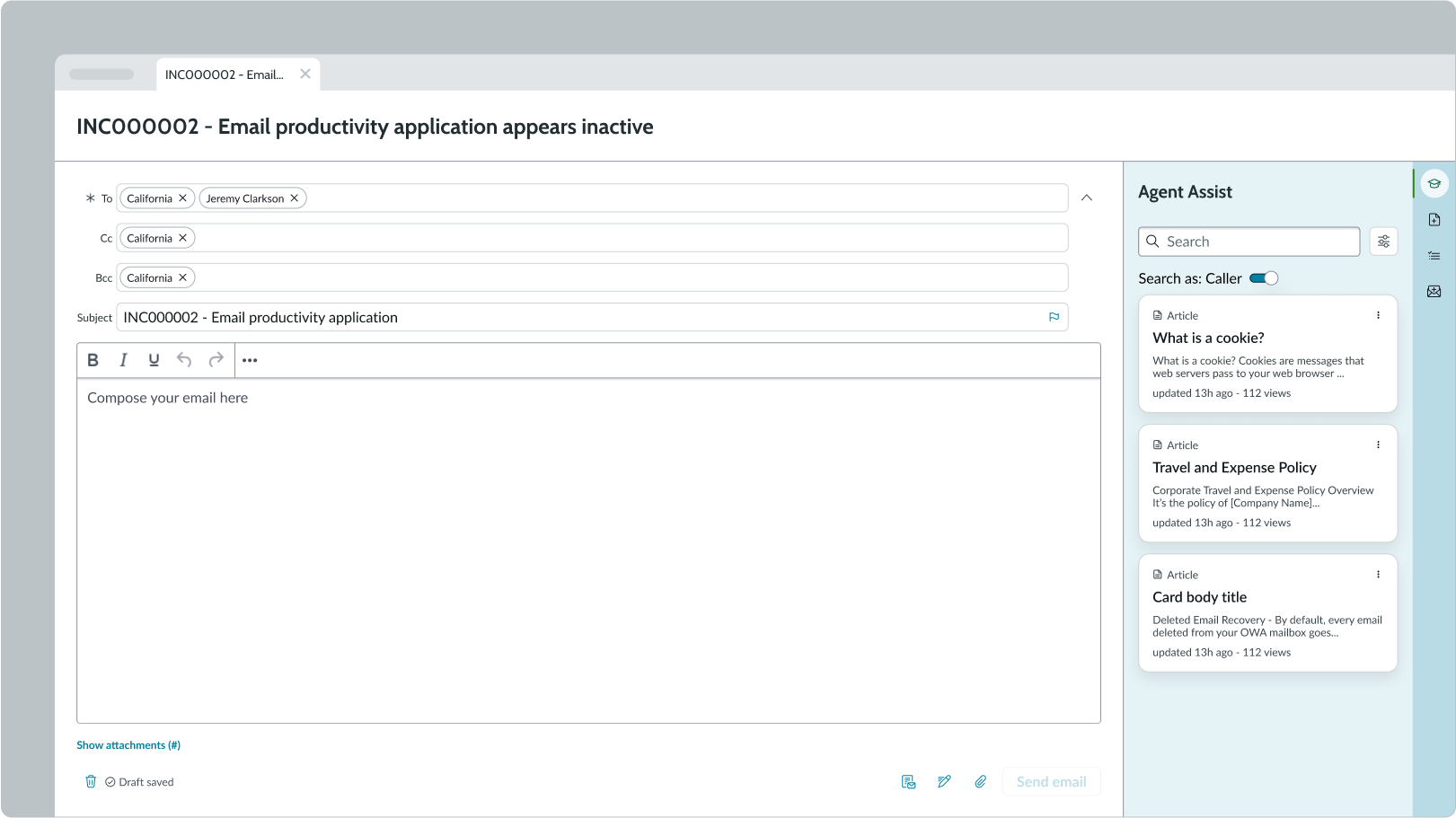
Composing and sending emails
Composing a new email
Users can create a new email from scratch that is tailored to their specific needs and communication.
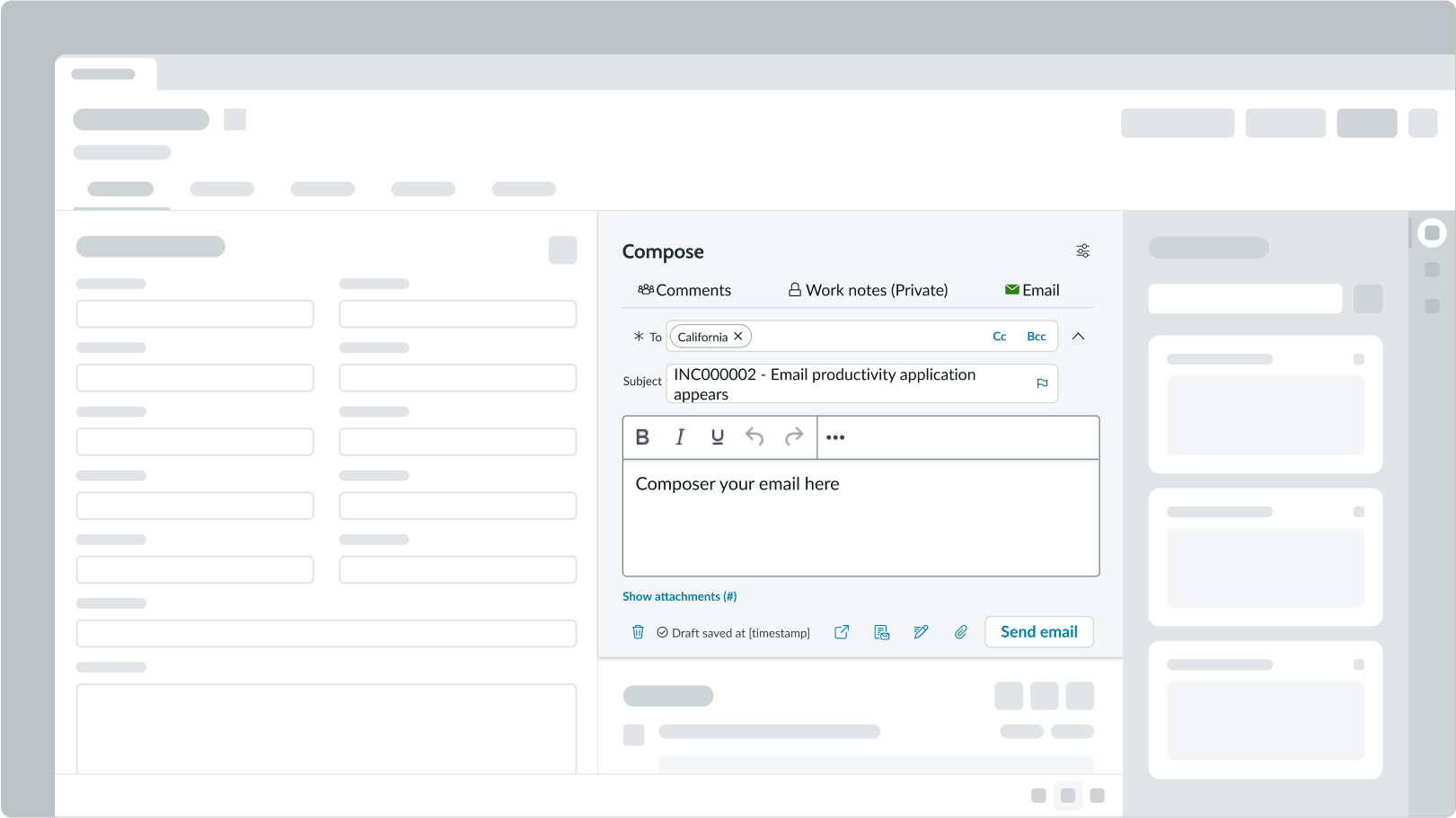
Using a template
Templates provide users with predefined message formats they can use to quickly create emails for common scenarios, streamlining the email creation process by ensuring consistency across communications. Access templates through the email composer actions toolbar or via the contextual side bar.
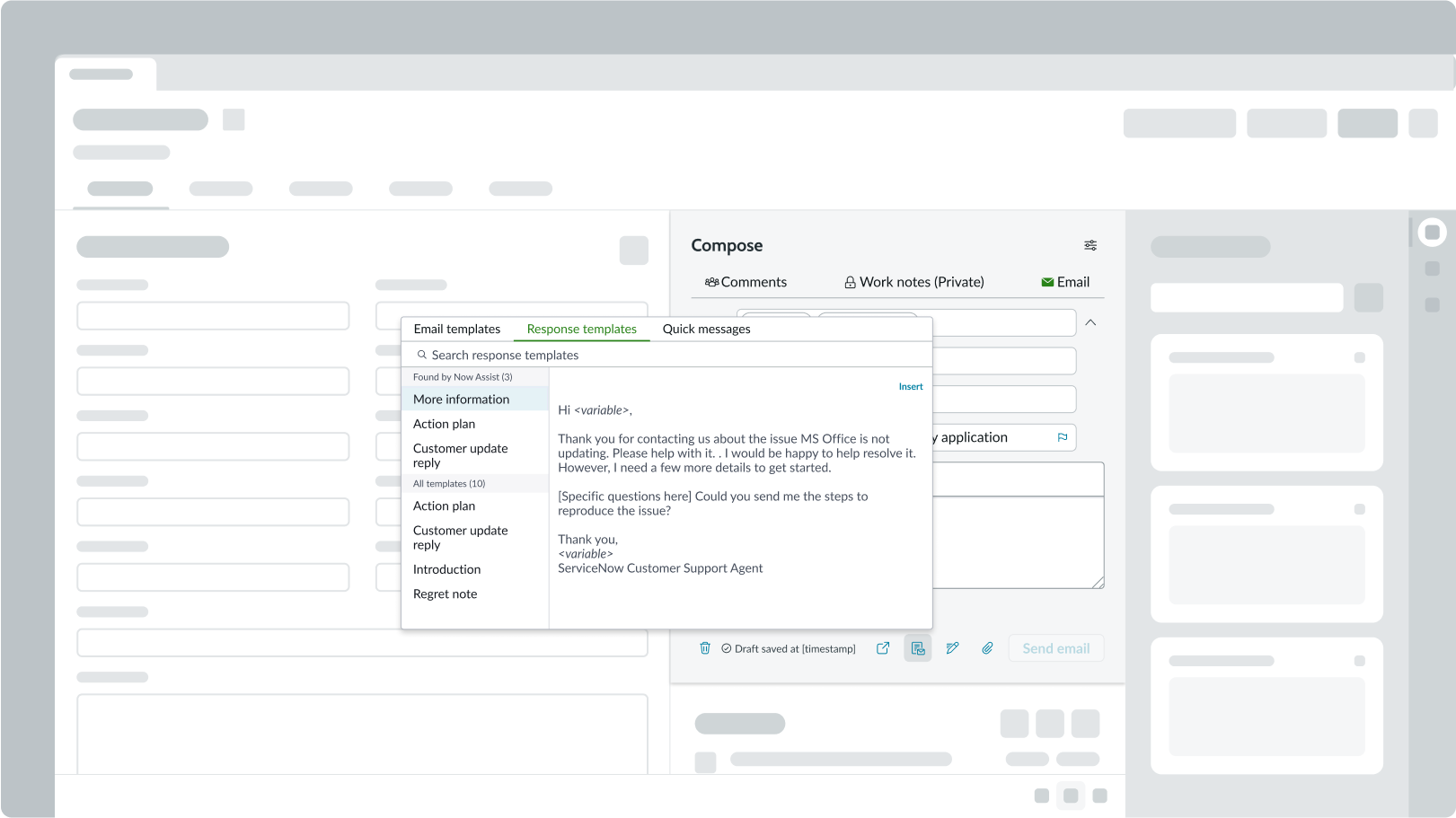
Generating email with Now Assist
If enabled, users can leverage Now Assist to generate email content based on prompts or context, saving time and effort while providing valuable suggestions and ideas. Users can use Now Assist to help them elaborate or shorten the message’s content. Elaboration can provide more content or context. Whilst shortening helps make the communication more concise and succinct. Learn more about Now Assist.
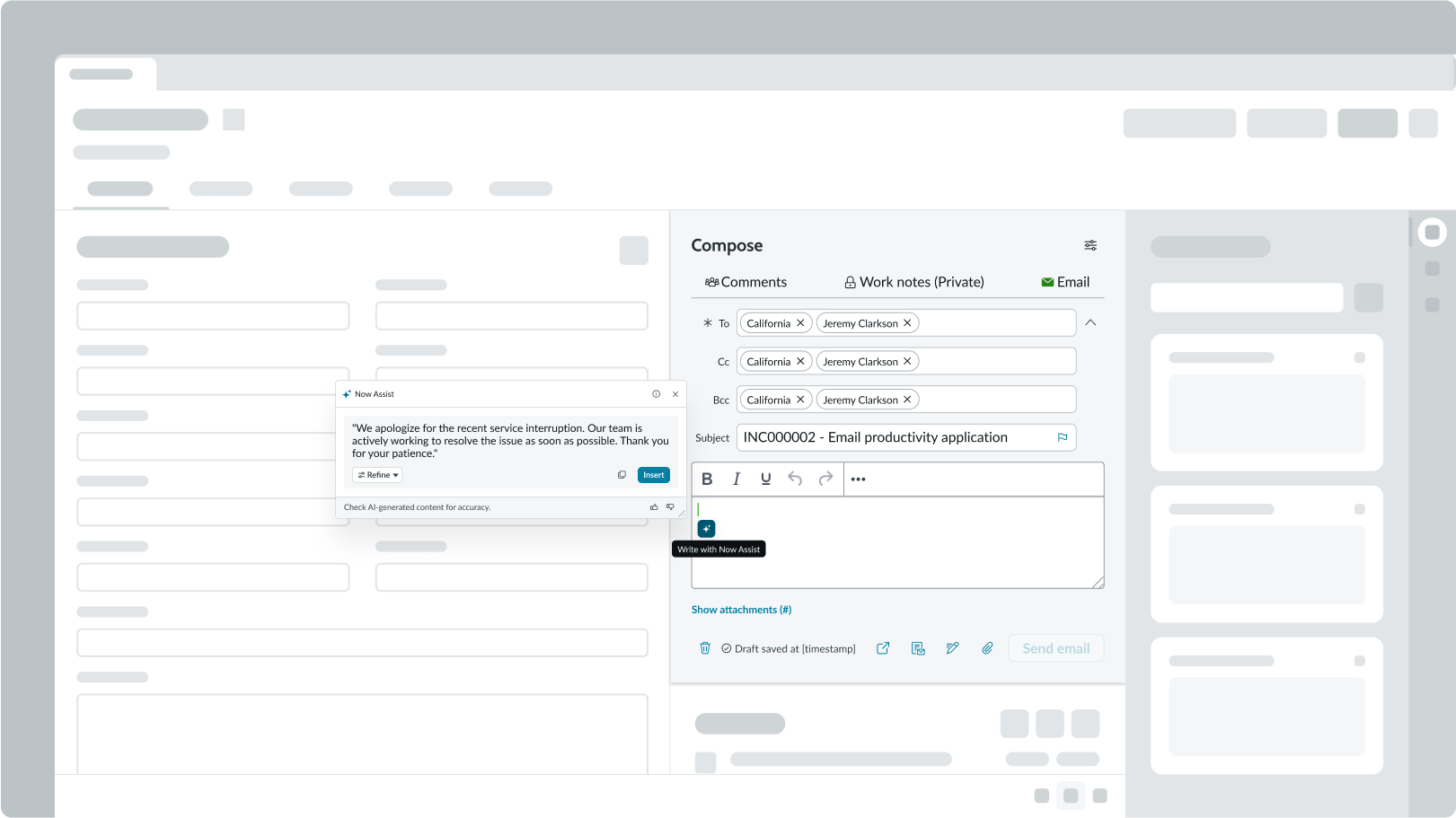
Adding templates from the contextual side bar
The contextual side bar houses, if configured, all kinds of templates ranging from email templates and responses to quick messages that can help customers compose emails efficiently. Templates are available via the contextual side bar and also the templates icon in the actions toolbar in full screen view.
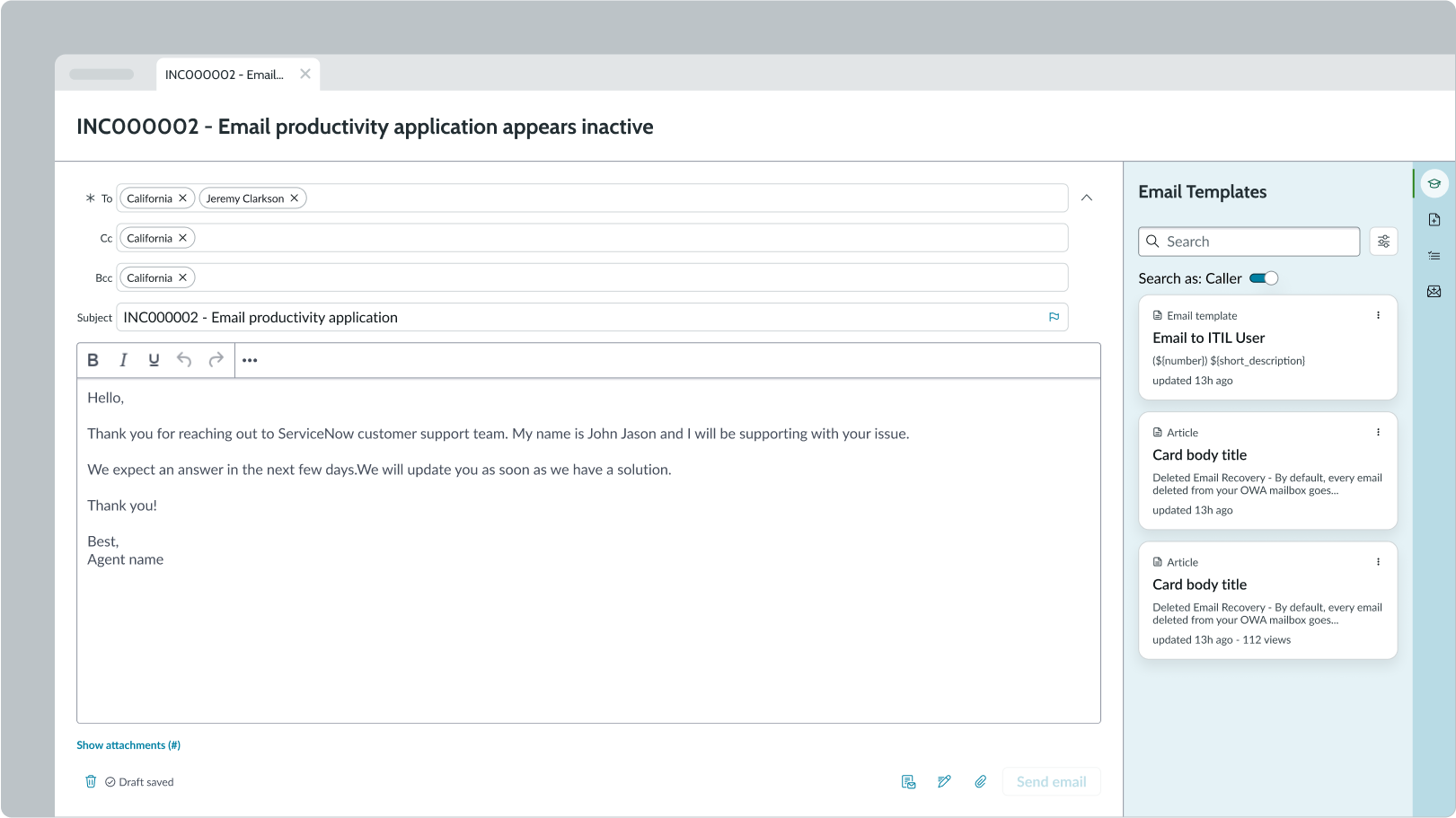
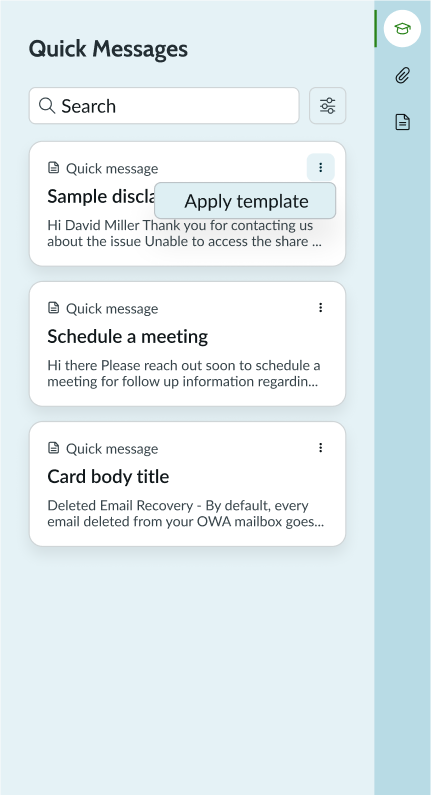
Quick Messages are predefined message that users will need to use but on more of an ad hoc basis. See usage guidelines...
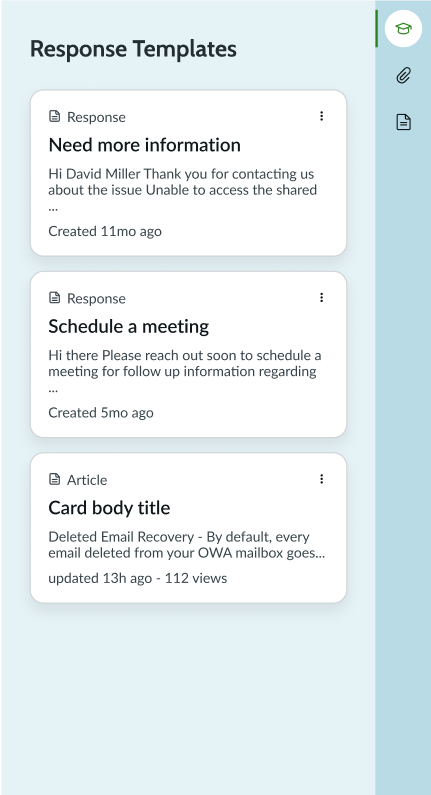
Response templates provide reusable messages that can be copied to an incident or task forms to provide quick and consistent messages to users
Adding knowledge base articles
The contextual side bar, when activated, provides contextually relevant links, articles, and other related content which can be inserted into the email message.
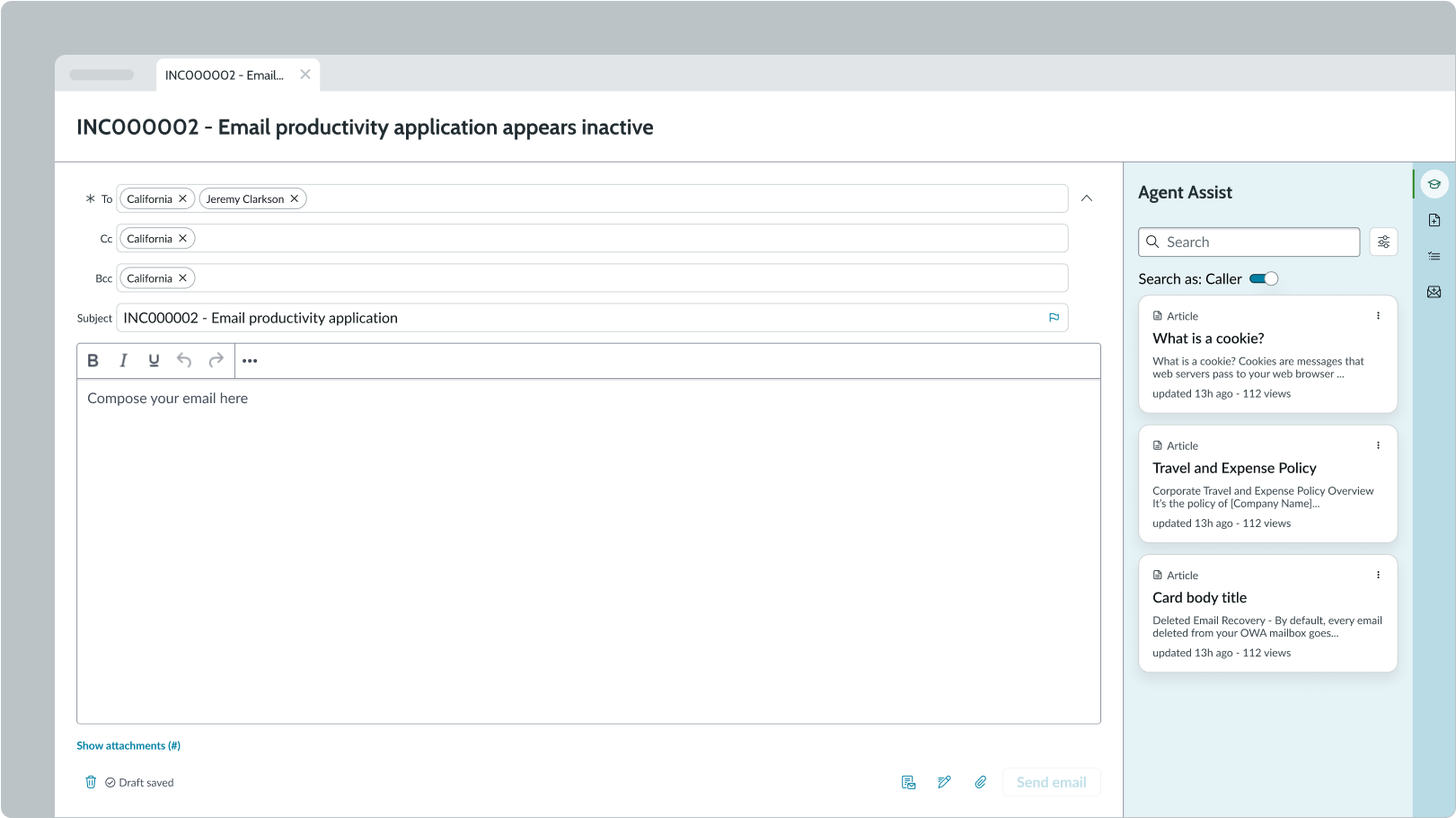
Sending
When the user enters their message within the composer, the “Send email” button will become active. They can now select the “Send email” button which initiates the email sending process; delivering the message to the intended recipients and updating the email status accordingly.
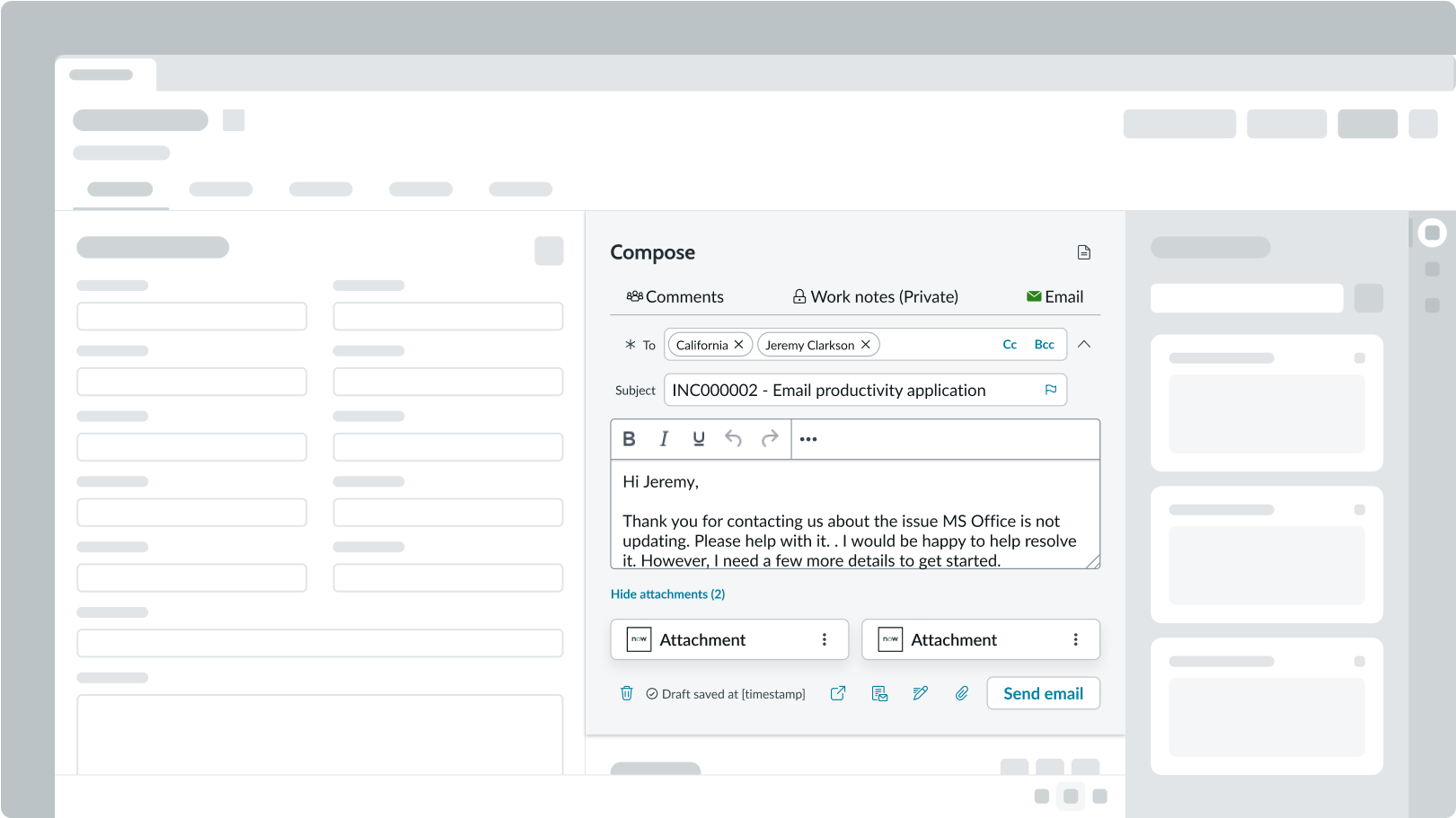
Once sent, the user will receive a notification that the email has been sent.
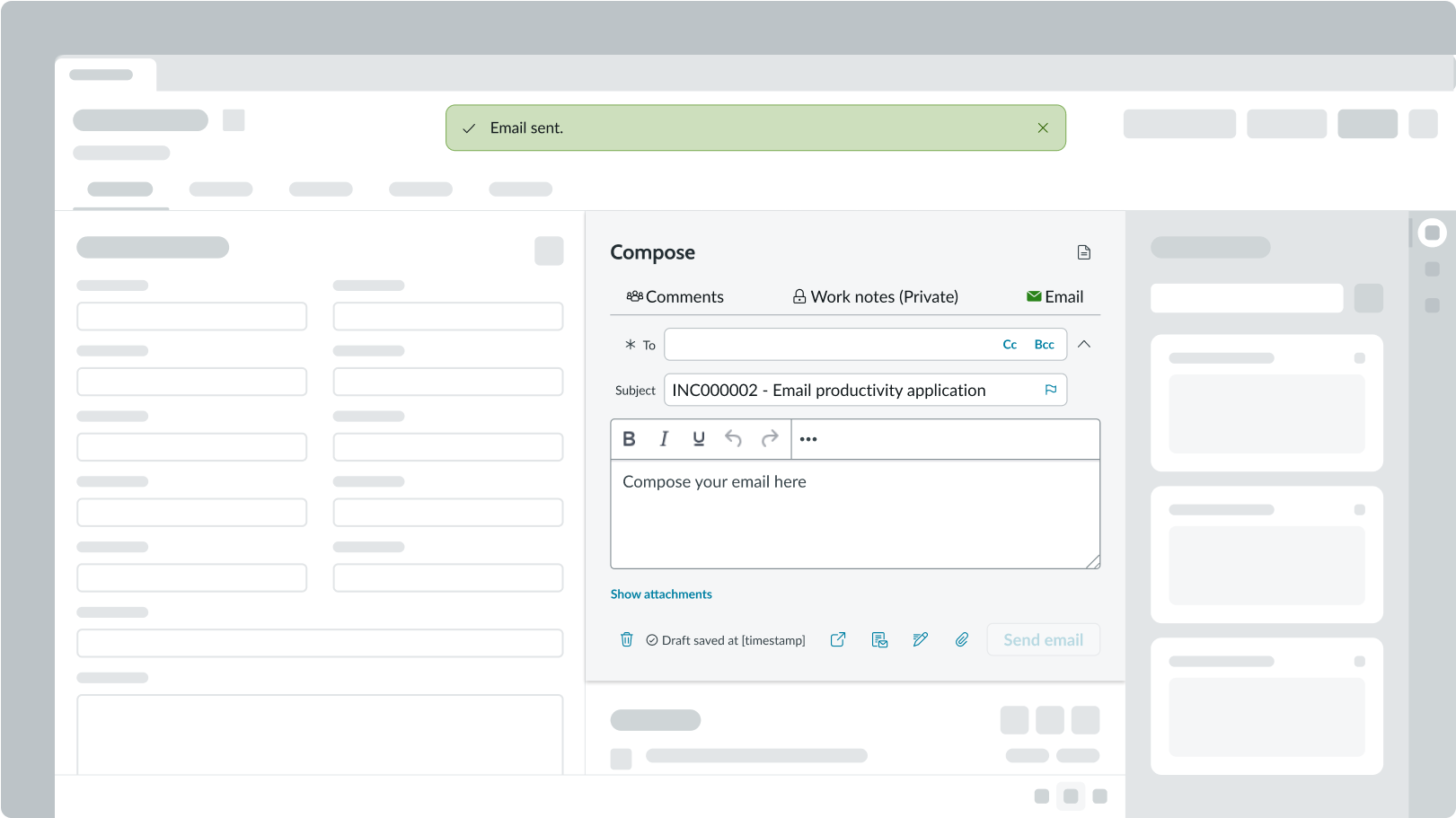
Email drafts
Emails that you create and don’t send are automatically saved as drafts. At any time, users will be able to view the 3 most recently saved drafts from the action button; for older drafts users can navigate to the manage drafts modal. Drafts can be sent any time.
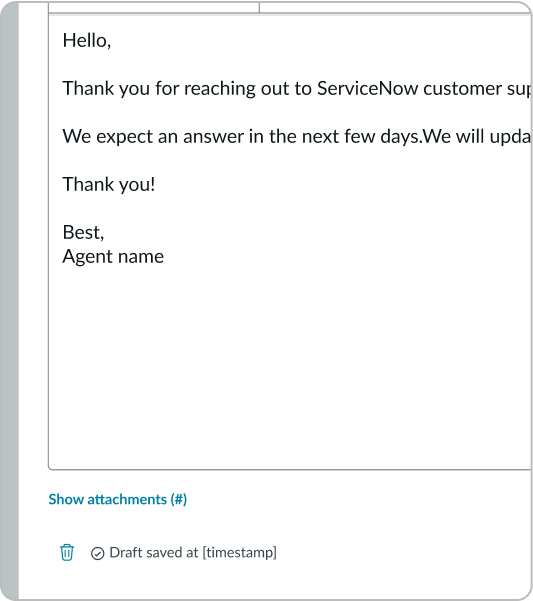
Draft status
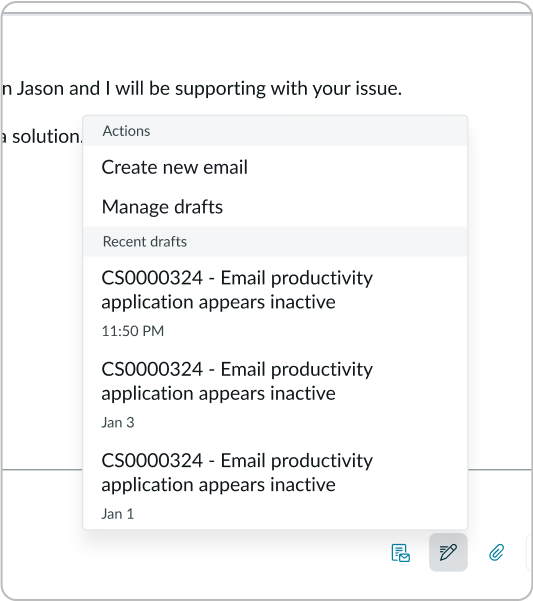
Drafts menu - populated
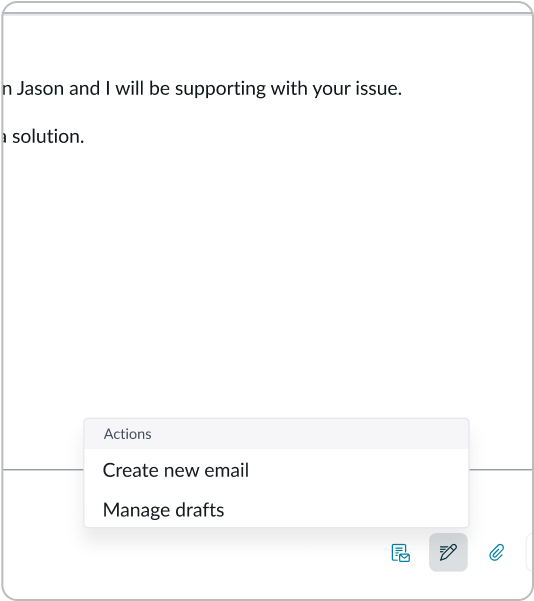
Drafts menu - empty state
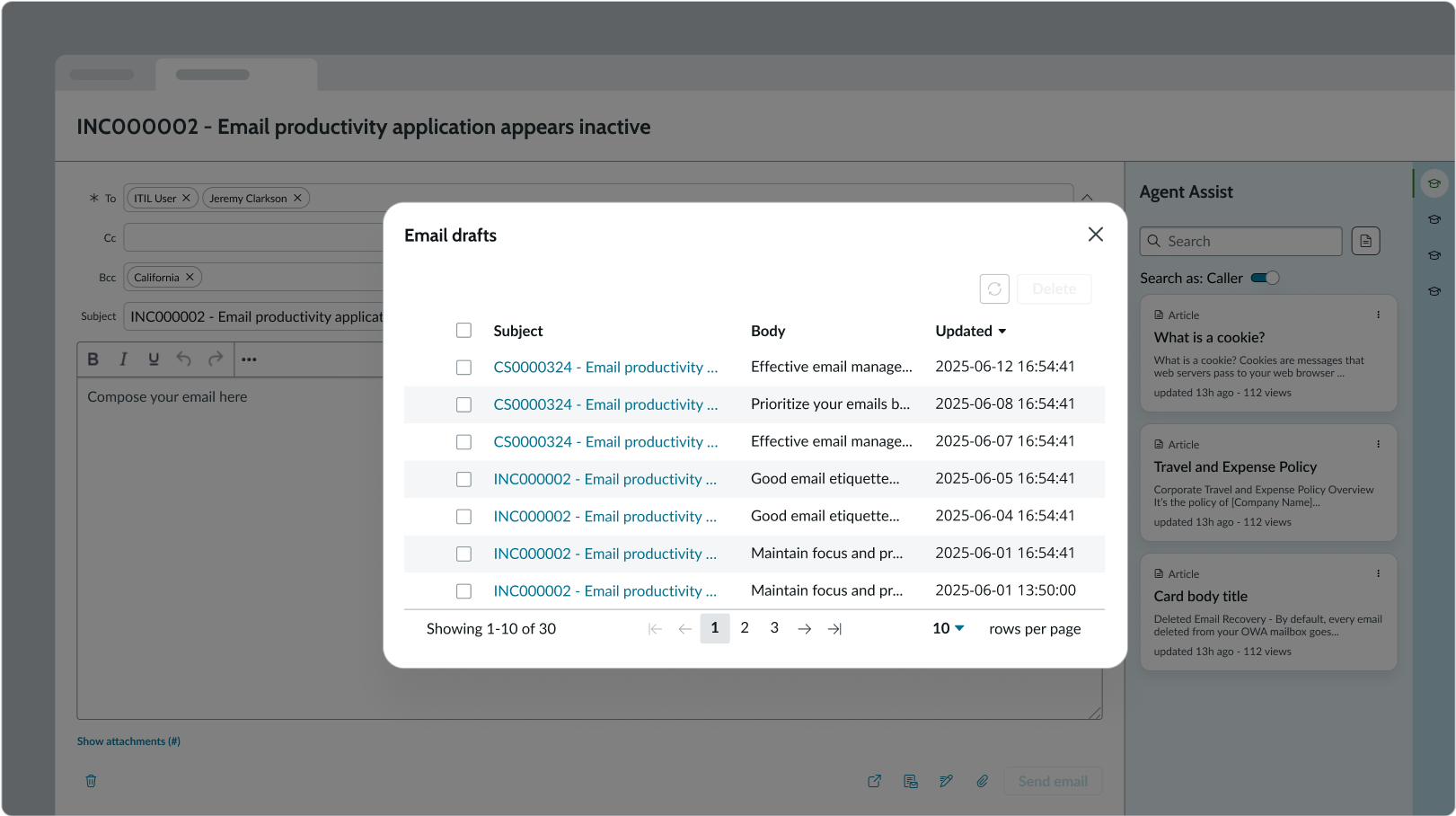
Users can also discard an unwanted draft from the composer using the delete button in the actions toolbar.
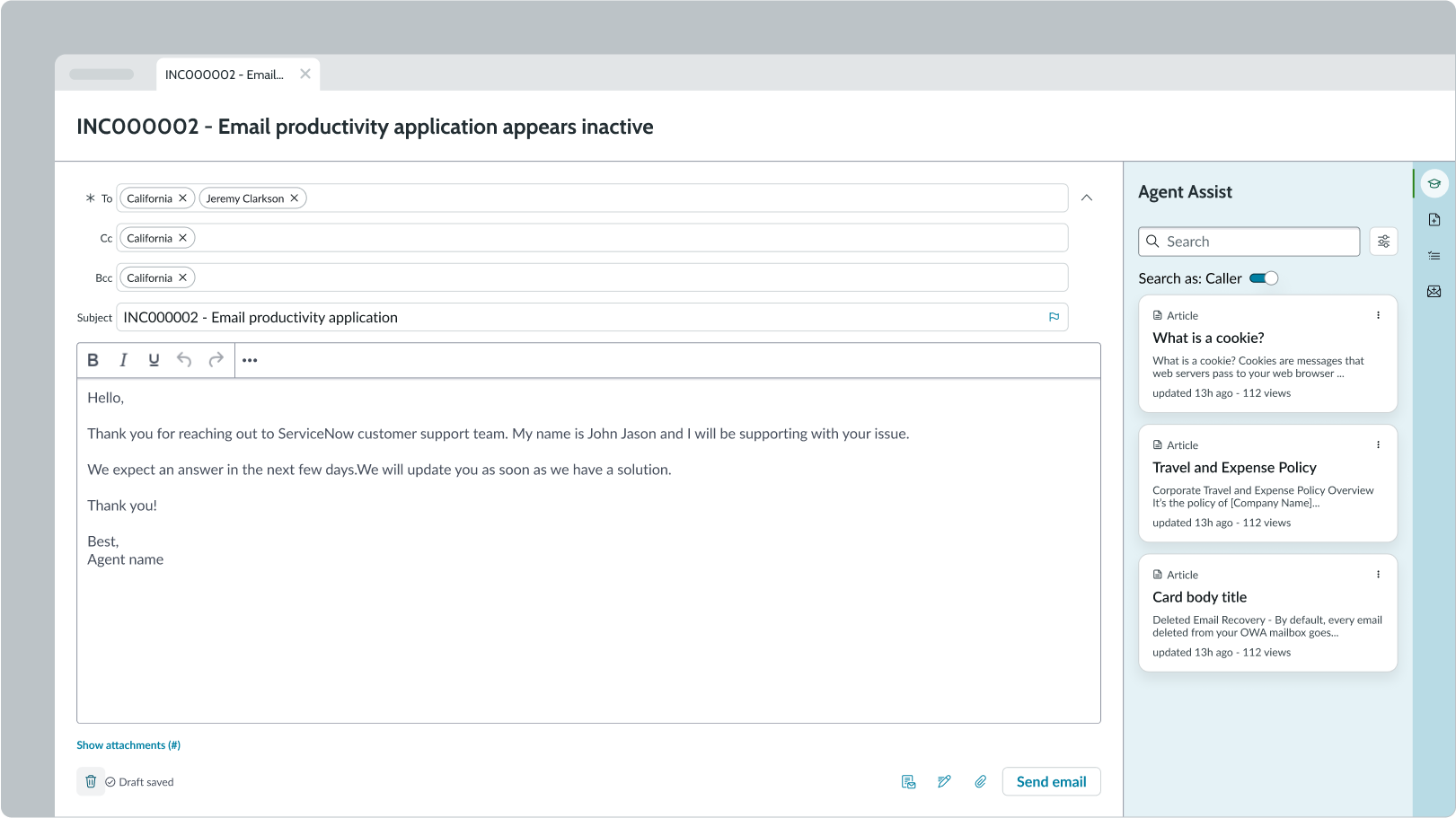
Managing recipients
Add email recipients
Users can type or copy and paste a list of email addresses, separated by commas or semicolons, into recipient fields. Recipient names or groups are displayed in a “pill” format and act and function just like text.
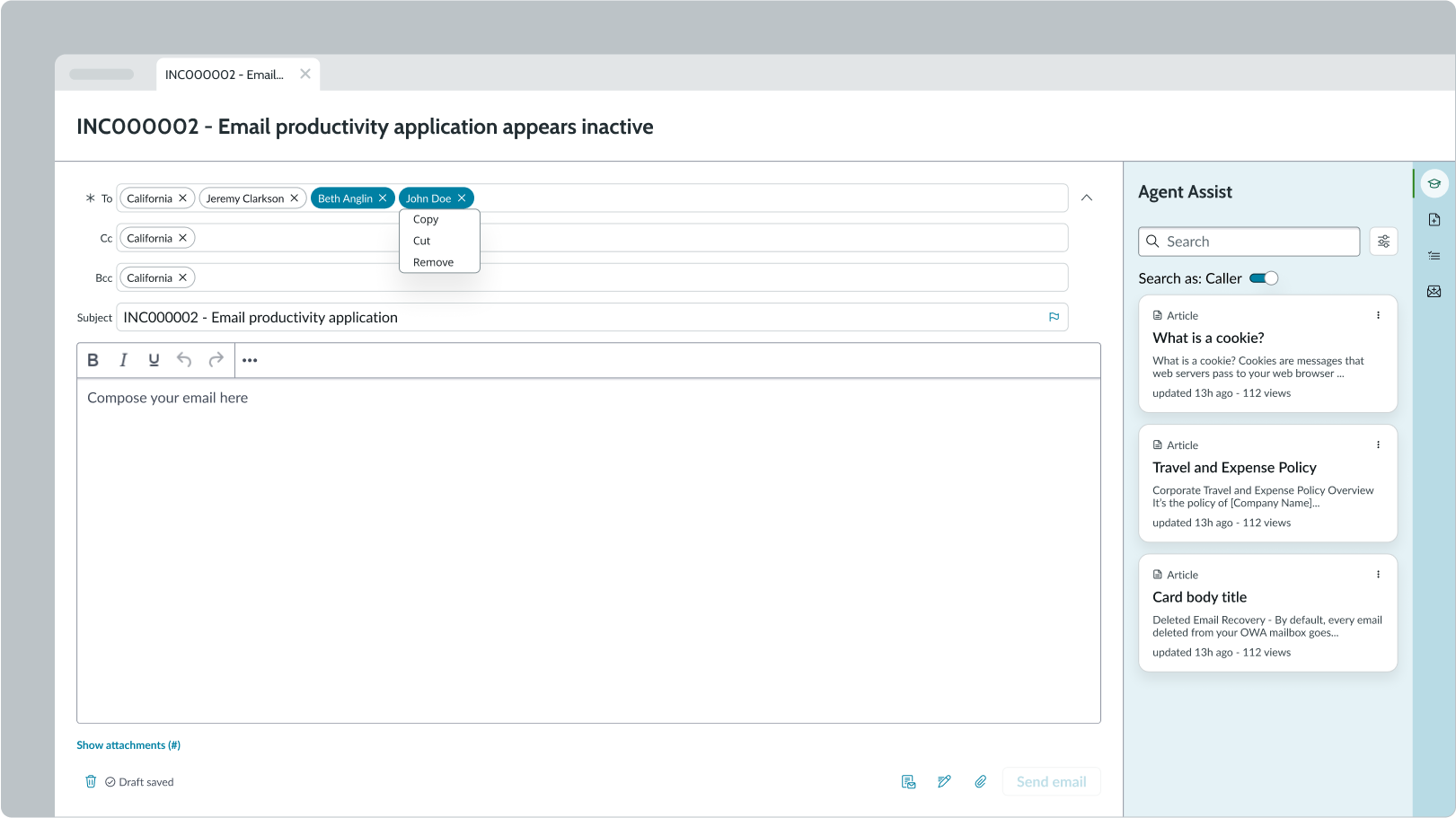
Drag and drop email recipients
Users can move one or more email IDs between recipient fields, using drag and drop, in the email composer. After an email ID is selected, the pill’s presence stays visible in the field that the email ID(s) is being moved from.
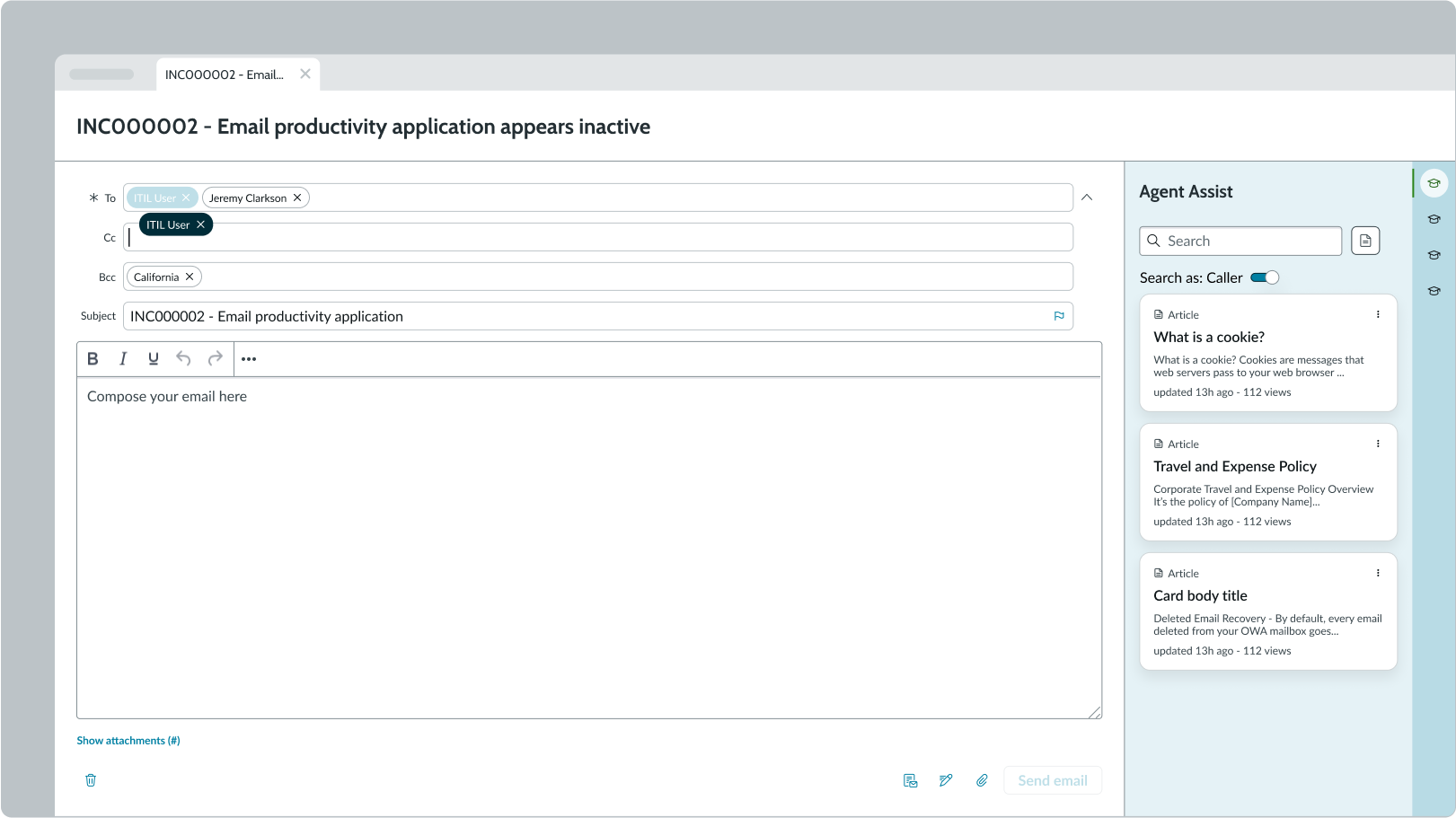
Attaching files
Within the email composer, users can preview and add attachments. They can do this via the attachments panel in the contextual side bar or by clicking the paperclip in the actions toolbar.
Show/hide attachments
Within the email composer, the attachments section allows users to display or hide attached files. When the attachments section is open, users can click the attachment card to see a preview of what has been attached, rename it, or remove it from the email.
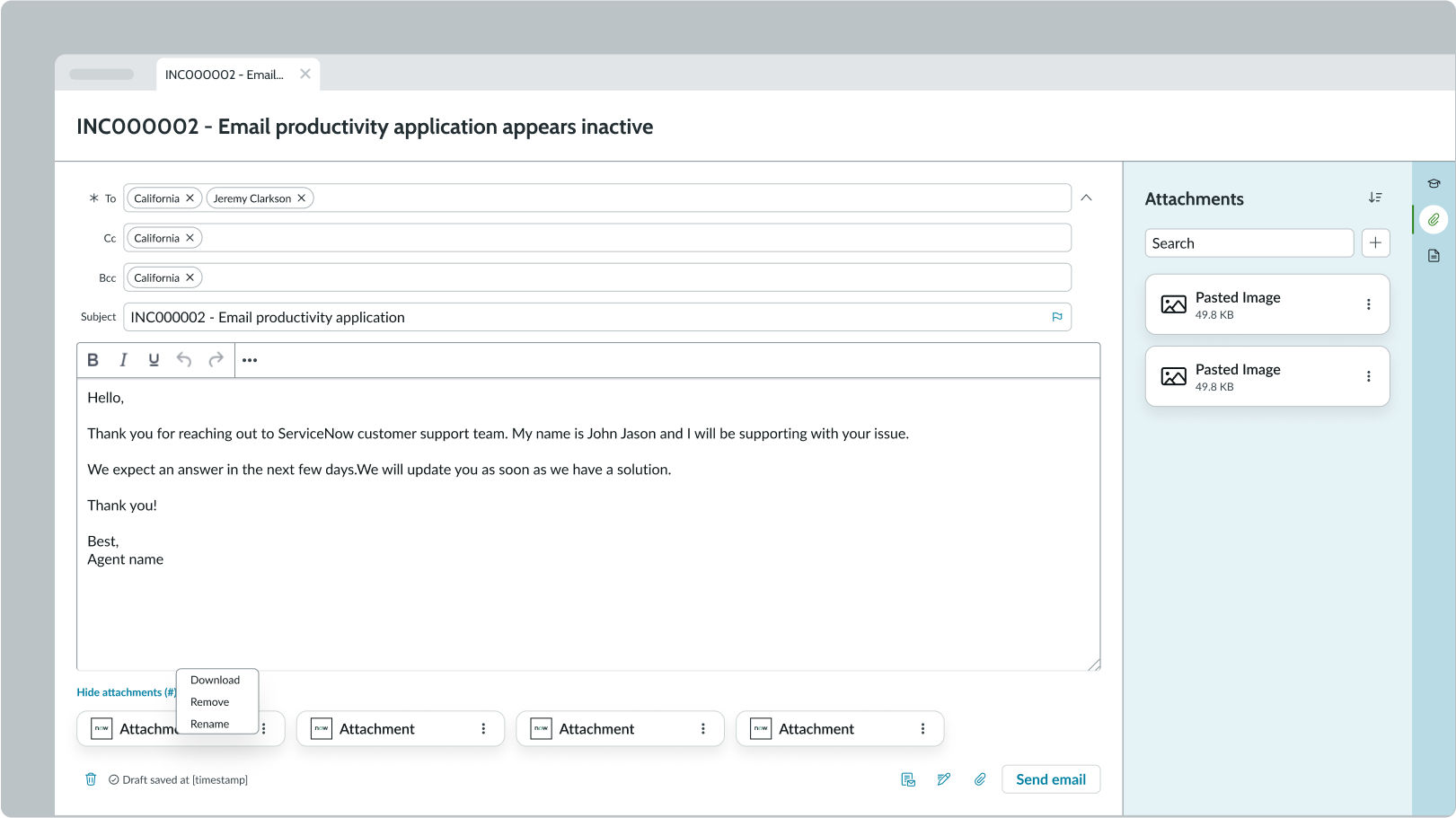
Alert messages
Alerts are generated so that users can understand the system’s status. Users can acknowledge, view more information, and take action to resolve them.
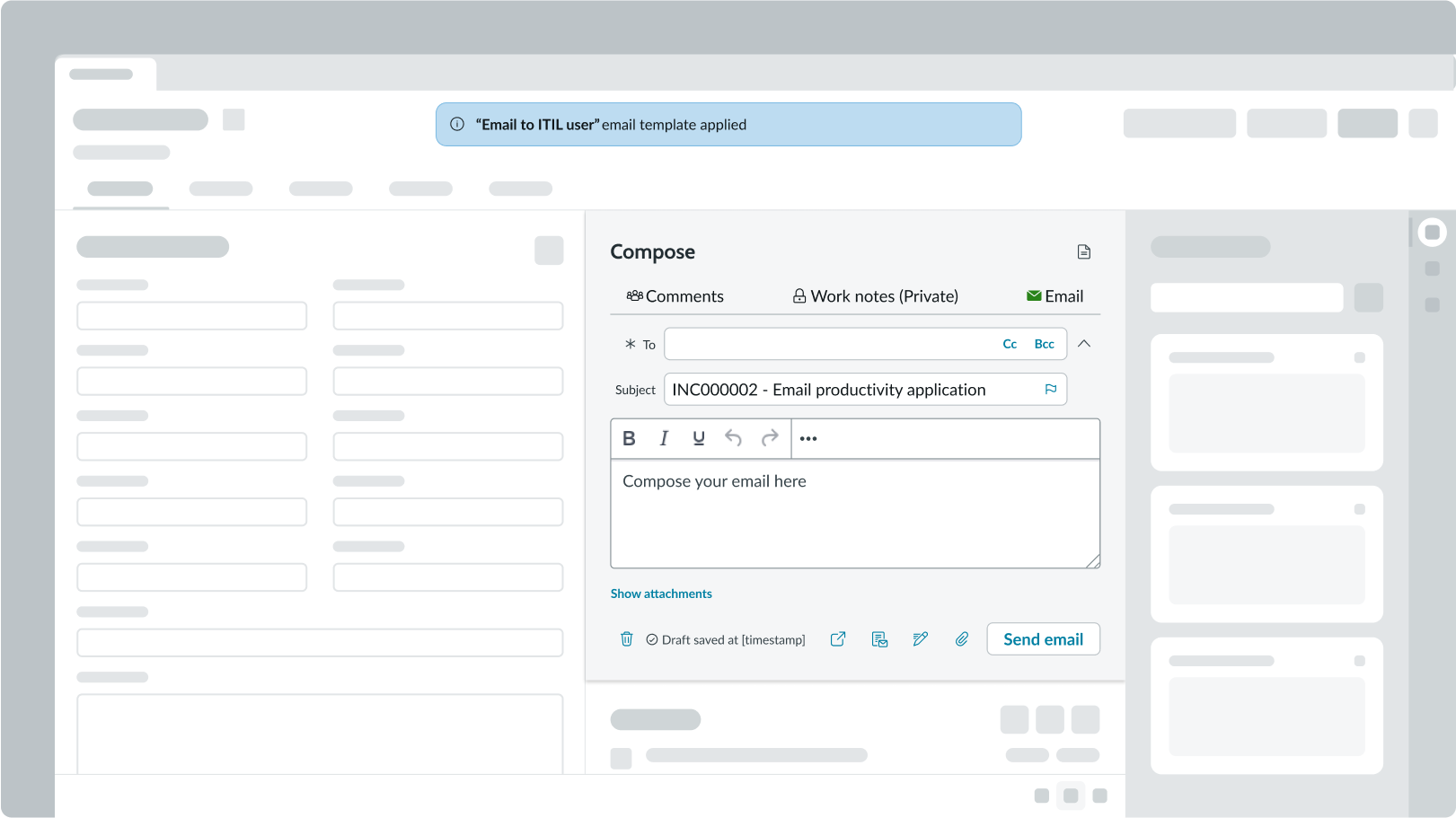
Error messages provide information about issues and guide users toward resolution.
Inline error handling
Sometimes mistakes happen when entering an email address into recipient fields. Error messages related to email recipients are displayed inline next to the corresponding field.
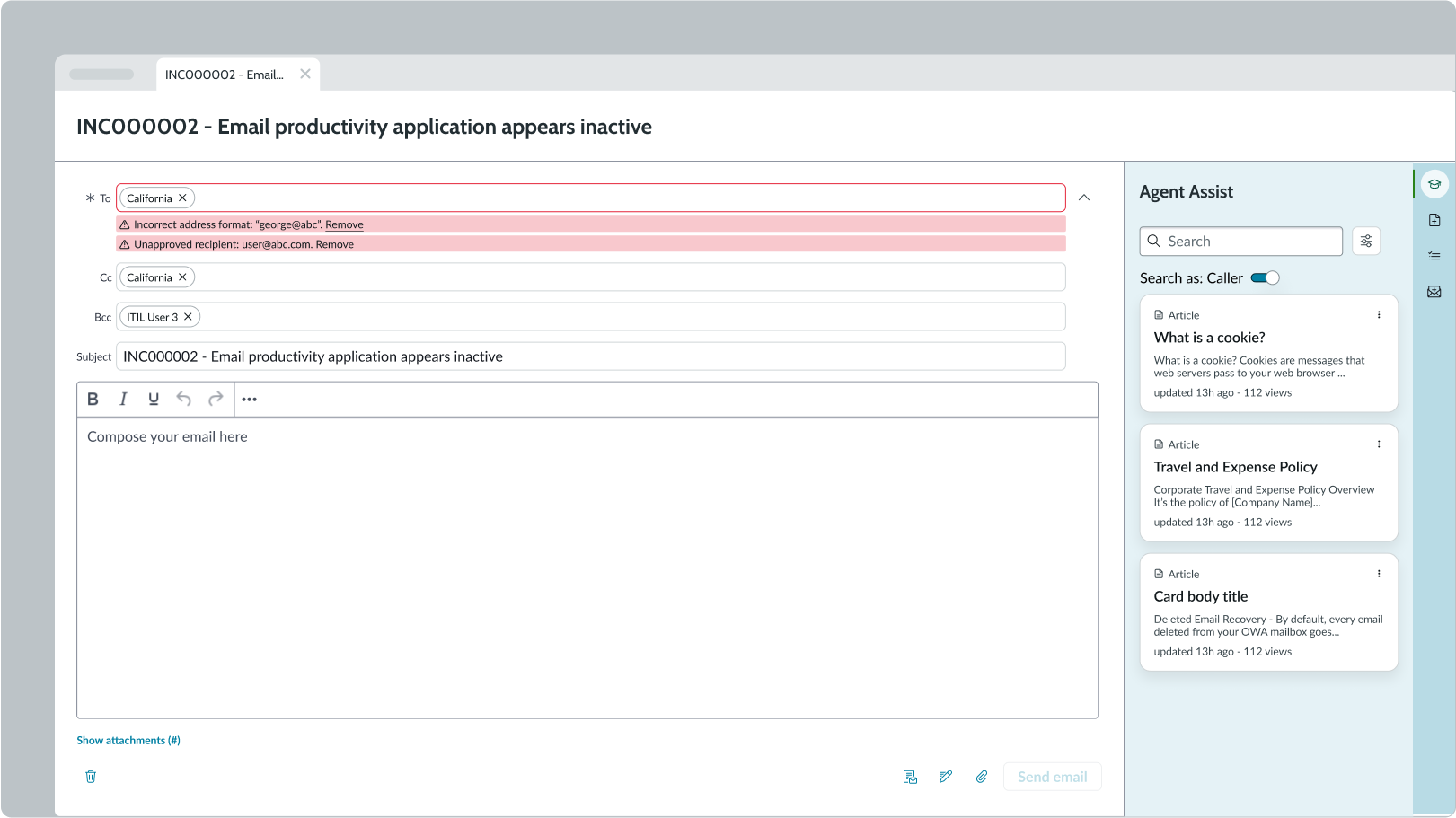
Special configurations
Email composer — stacked
The email composer mini allows users to display it either in tabbed mode or stacked mode. In stacked mode, each tab is displayed vertically on top of each other.
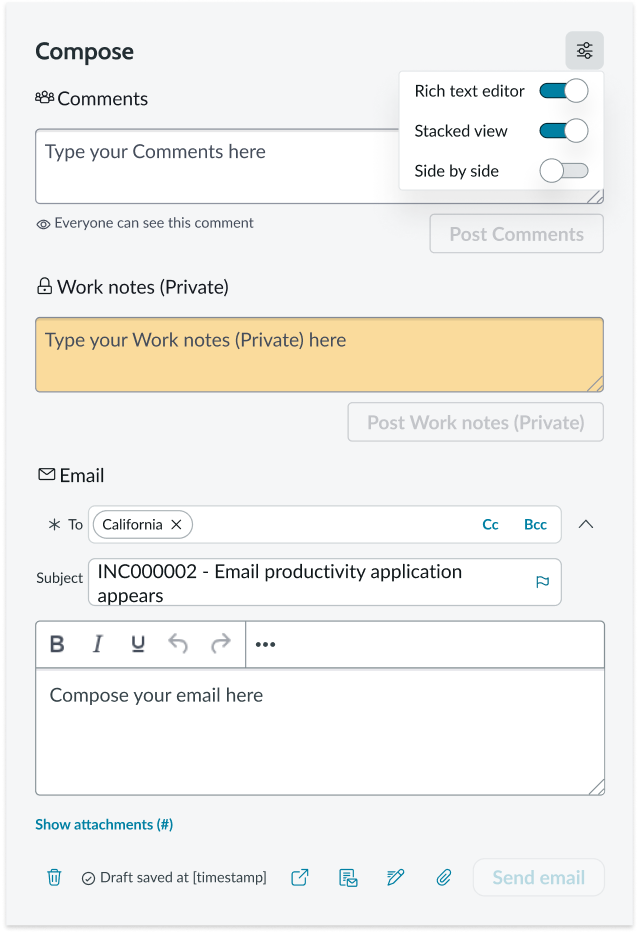
Stacked
